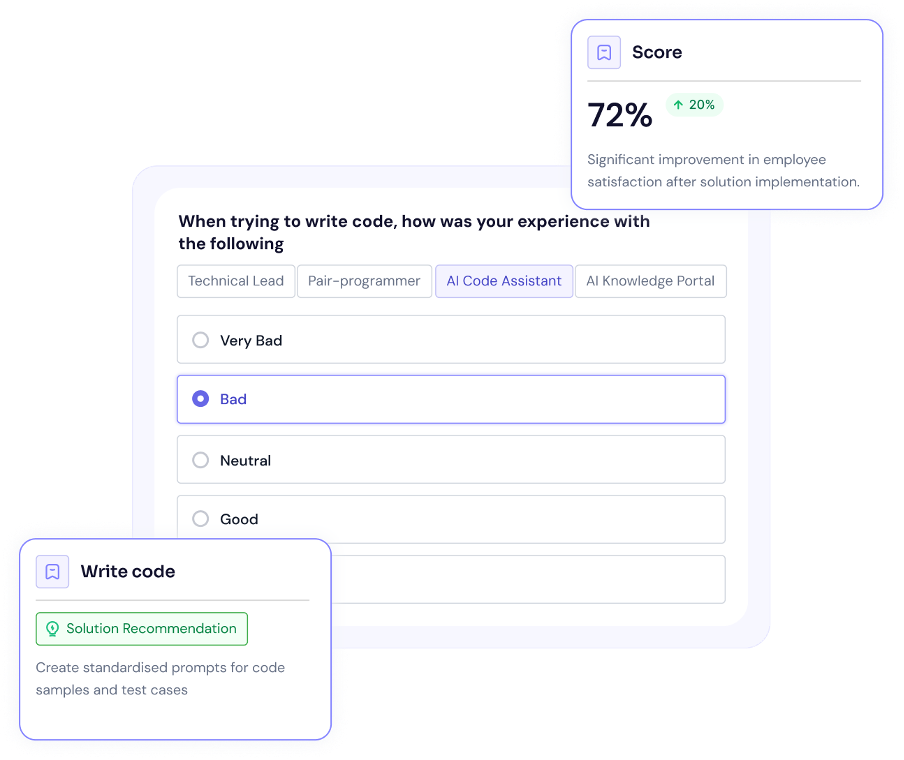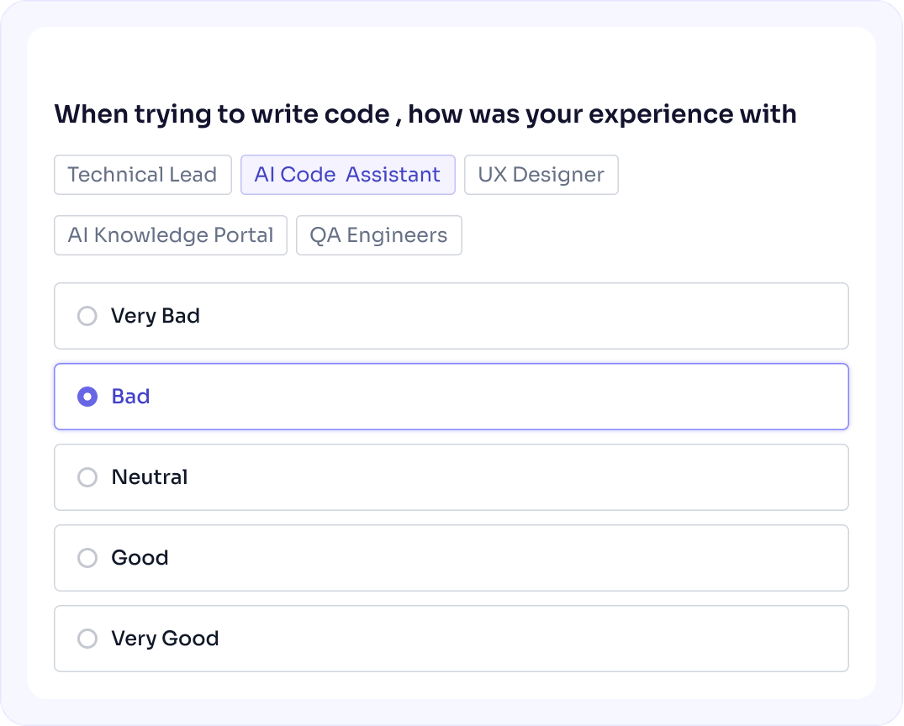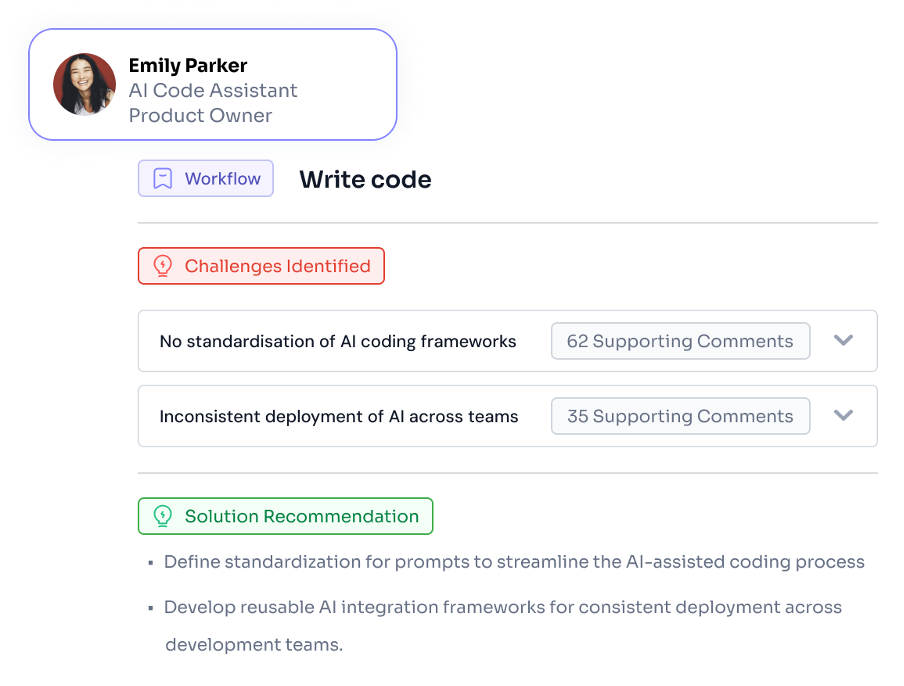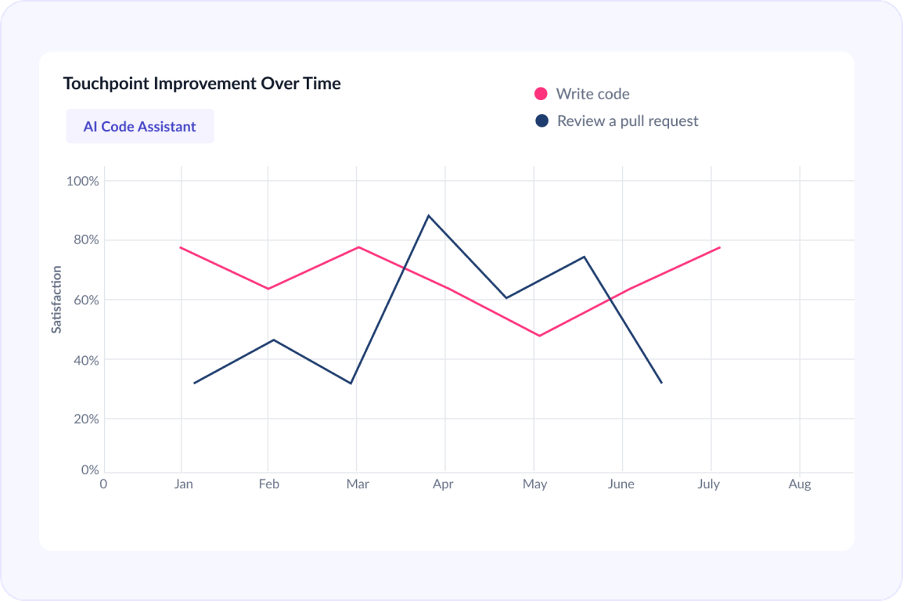Get an X-ray of employee workflows
Get an X-ray of employee workflows
FOUNT measures employee workflows, analyzes when & why friction occurs and provides improvement recommendations so that you can fix what's broken, apply AI where it actually helps, and let workers focus on high value work.

.webp)
.webp)
Existing methods to analyze
people's workflows don’t cut it.
Existing methods to analyze
people's
workflows don’t cut it.
.svg)
They don’t reveal where and why friction occurs
Process mining, telemetry data and sentiment surveys don’t show the real causes of effort, delays, and rework.
.svg)
They cannot scale
Research-based methods such as focus groups can’t be repeated at scale — or used to track progress over time.

They are not built for action
Current tools collect data, but they don’t turn it into targeted fixes across tools, processes, and policies.
Real gains are possible when you start
from the reality of employee workflows.
Ask the right questions
Targeted workflow-centric measurements capture effort, time and experience with specific tools, processes, and supporting teams.


Uncover friction in workflows
FOUNT’s analysis engine and dashboards uncover the root causes of friction, equipping cross-functional owners of tools, processes, etc. with shared clarity on the problem to solve.
.png)
Get recommendations for targeted action
Clear root causes paired with recommendations inform what to fix, shift, automate or augment in workflows.


See improvements
over time
FOUNT remeasurements validate workflow improvements and time saved to inform ROI reporting.

Annual cost savings
time saved across employee workflows
hours in released capacity annually
employee satisfaction
score in ai tools adoption
.svg)
Resources
Fresh perspectives about reducing work friction and improving employee experiences.
General FAQs
FOUNT is a diagnostic platform that pinpoints friction inside employee workflows — so you can see where work breaks down, why it happens, and what to fix. It goes beyond satisfaction scores or system logs to expose the real blockers slowing people down, from approval bottlenecks to handoffs to tool gaps.
FOUNT helps workforce transformation leaders who are driving large-scale changes — from AI rollouts to process and role redesigns. They use FOUNT to validate whether work is actually getting easier for the employees, and to prfioritize fixes based on real-world friction data, not assumptions.
Today, most companies rely on engagement surveys, focus groups, or system data — but these don’t show where work actually breaks down. They miss the real effort and blockers inside workflows, making it hard to prioritize what to fix or tie changes to ROI.
FOUNT measures time, effort, and friction at the workflow level — with minimal disruption. It’s more precise than generic surveys and more actionable than satisfaction scores, because it’s grounded in how people actually get work done.
FOUNT addresses the visibility gap that undermines workforce transformation and AI efforts. Organizations are under pressure to unlock capacity, redesign work, and deploy AI — but most rely on data that doesn’t show where work really breaks down. System metrics, surveys, and process maps miss the lived reality of work, leading to misplaced fixes and AI deployments that don’t stick.
FOUNT changes that by:
- Measuring time, effort, and friction in real workflows
- Highlighting where capacity is lost and why
- Giving leaders scalable, actionable insight to guide redesign and AI decisions.
This enables transformation efforts grounded in reality — and makes their impact measurable.
FOUNT offers options such as a 6-week proof of concept, pilot programs, or a 2-year license. Pricing depends on scope and scale. Contact our Sales Team for details.
FOUNT collects data using targeted micro-surveys, using a proprietary framework built around employee’s workflows. These surveys can be deployed on small samples of the company’s workforce (300 - 500 people) and often require as few as 50 responses to get sharp insights on specific friction points that workers face.


.svg)
.svg)

.svg)


.svg)

.svg)
.svg)
.png)
.svg)
.png)
.png)




.svg)
.svg)